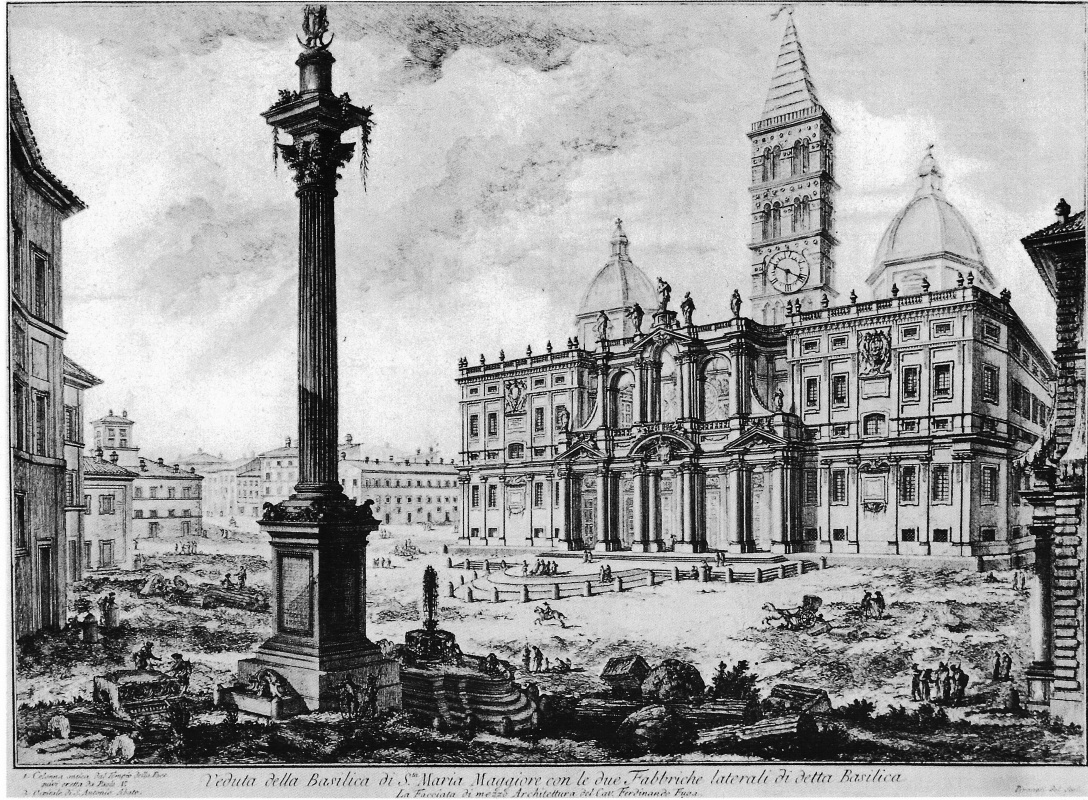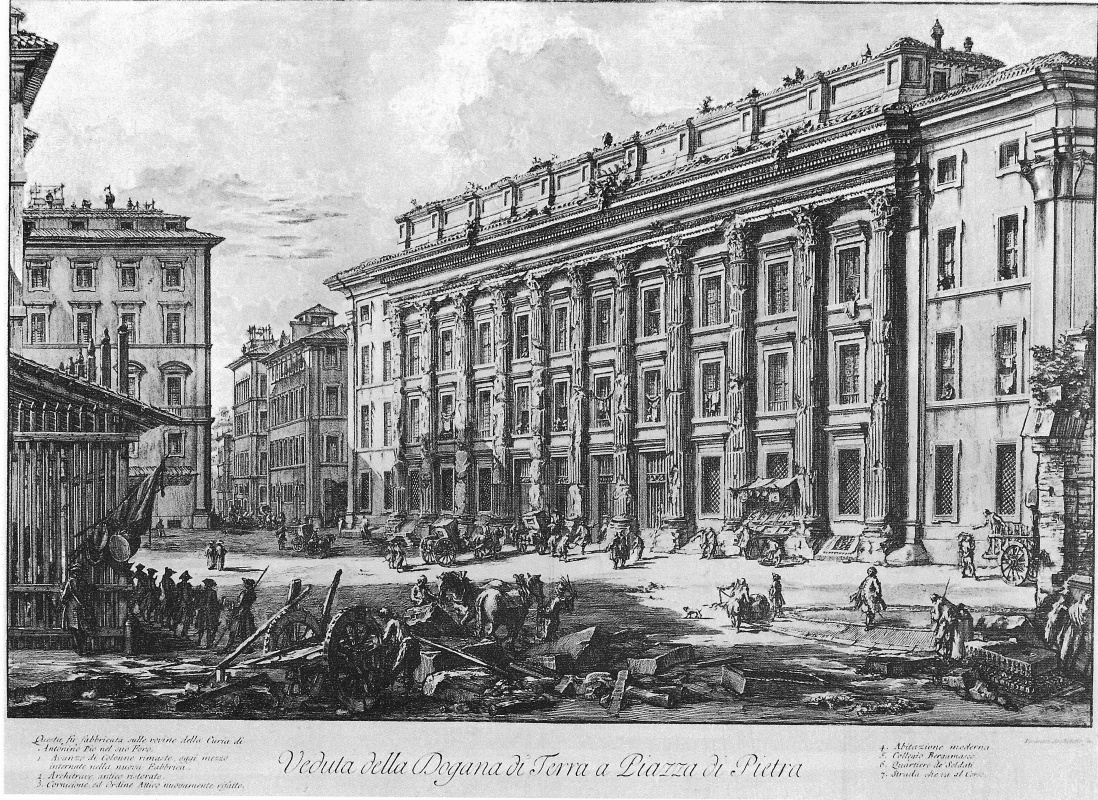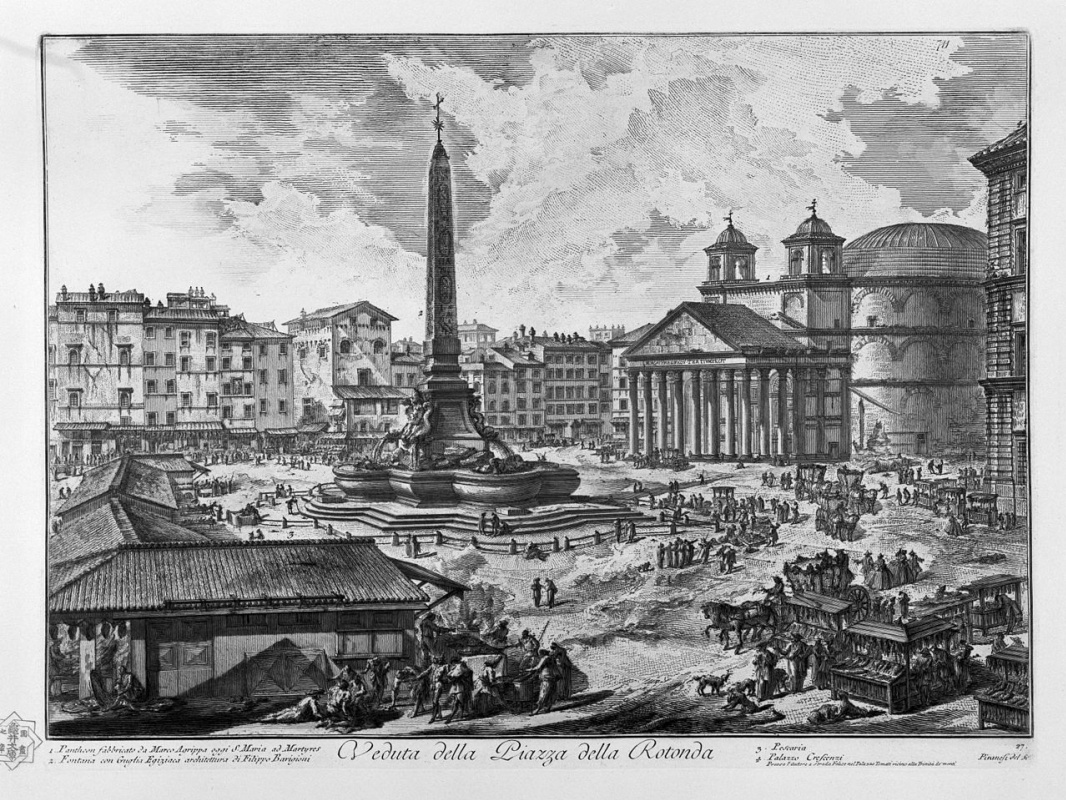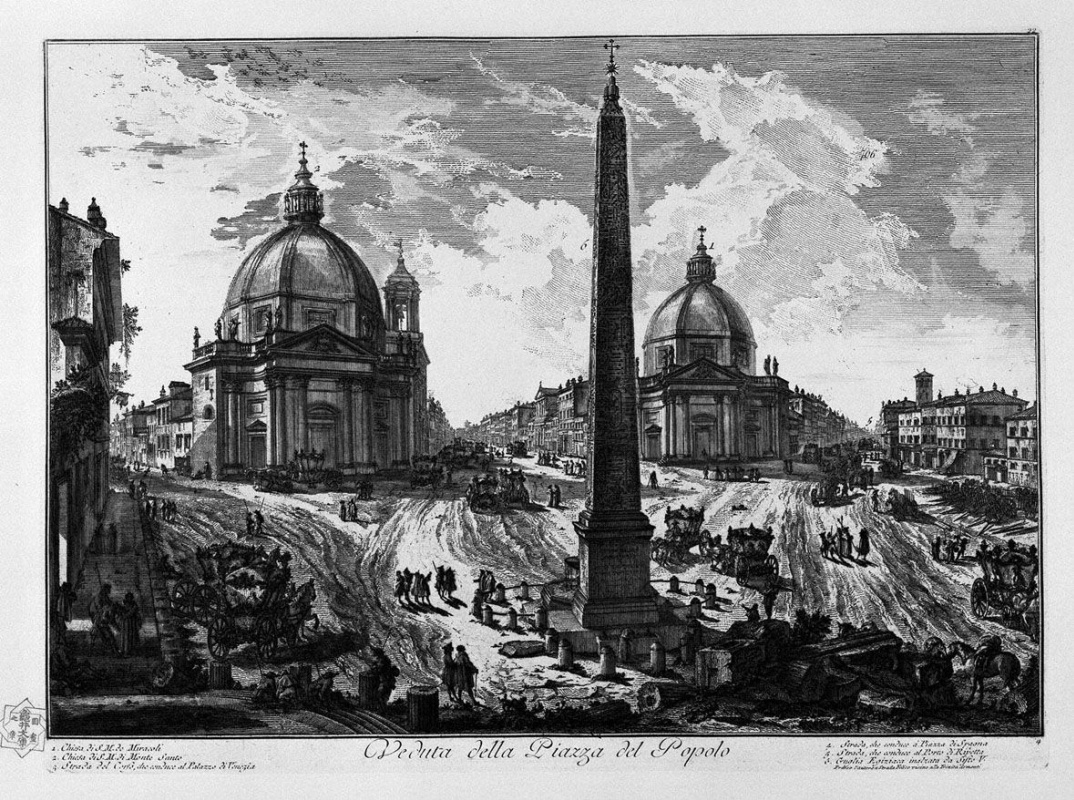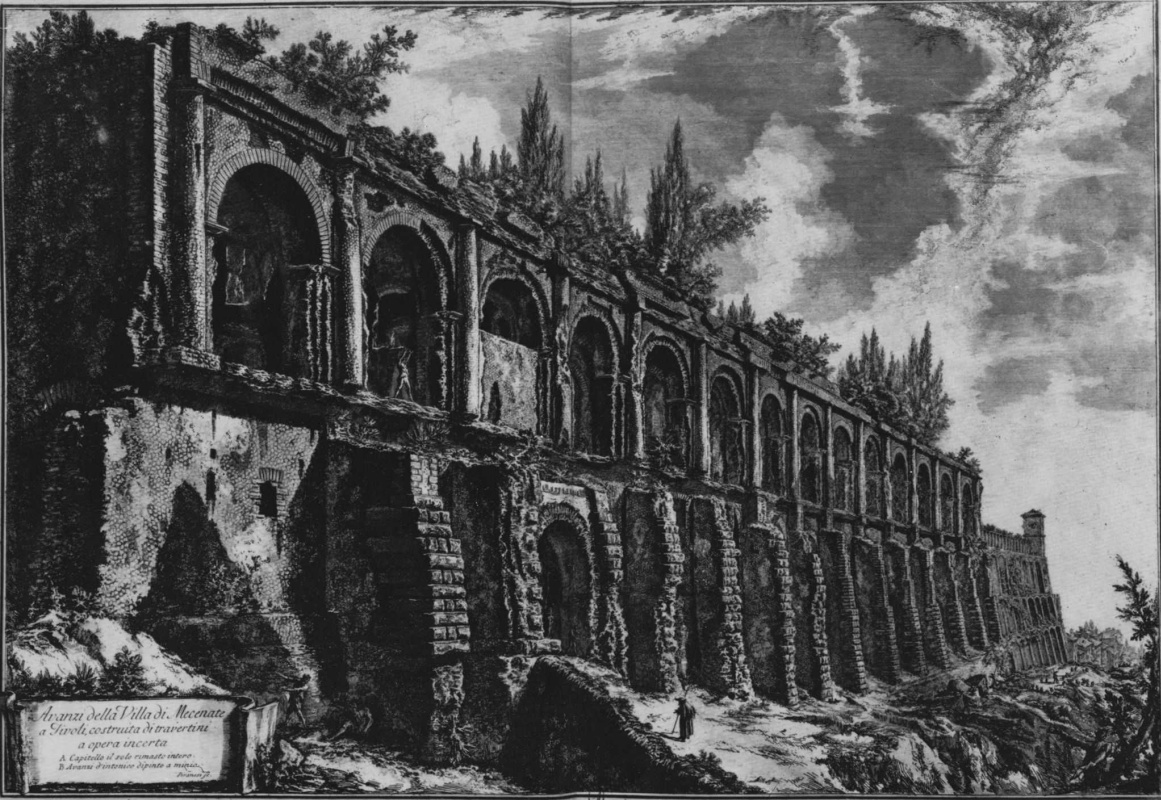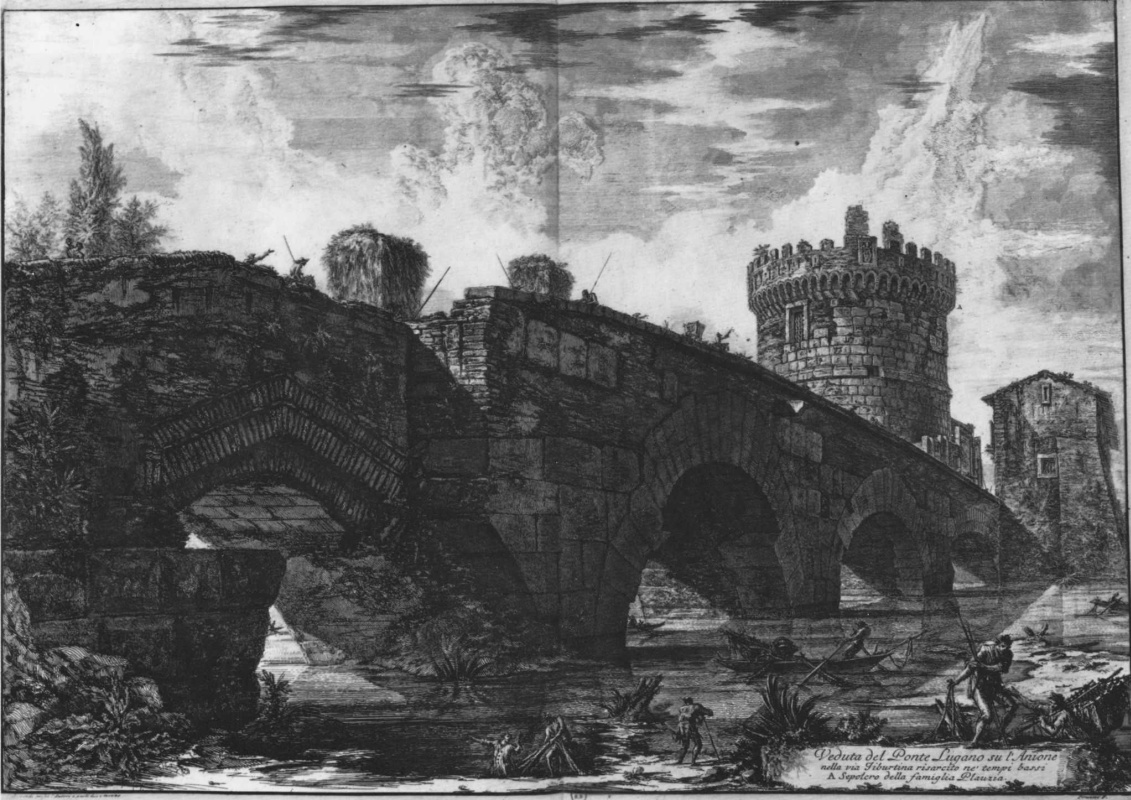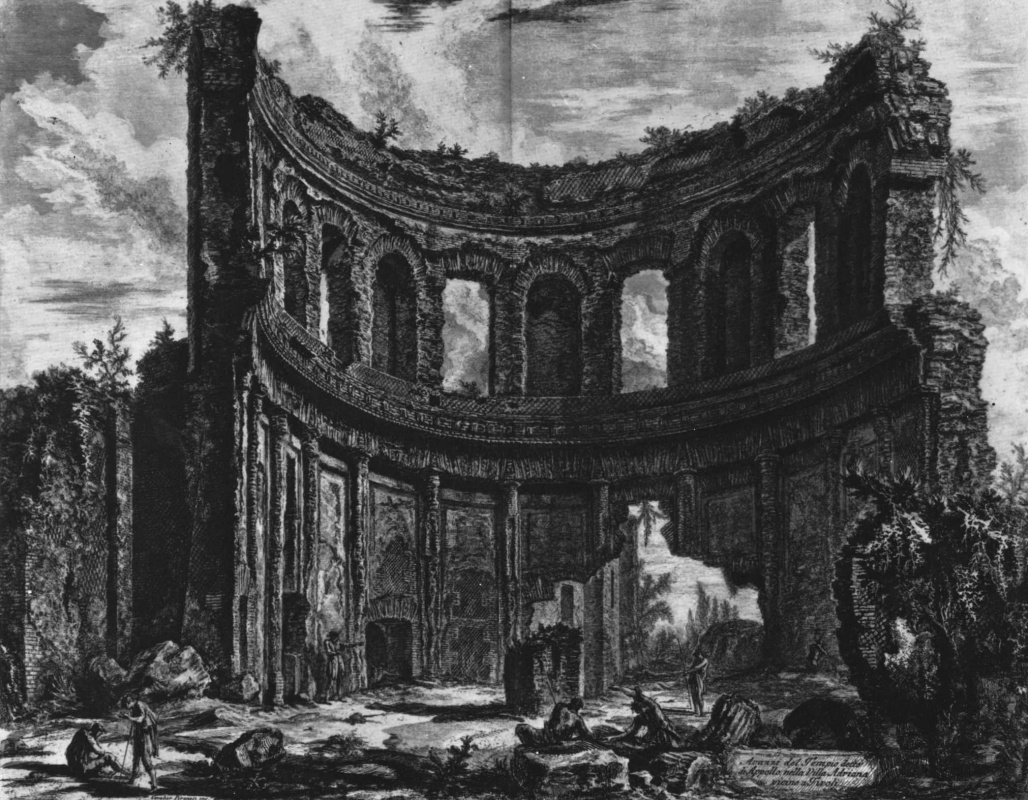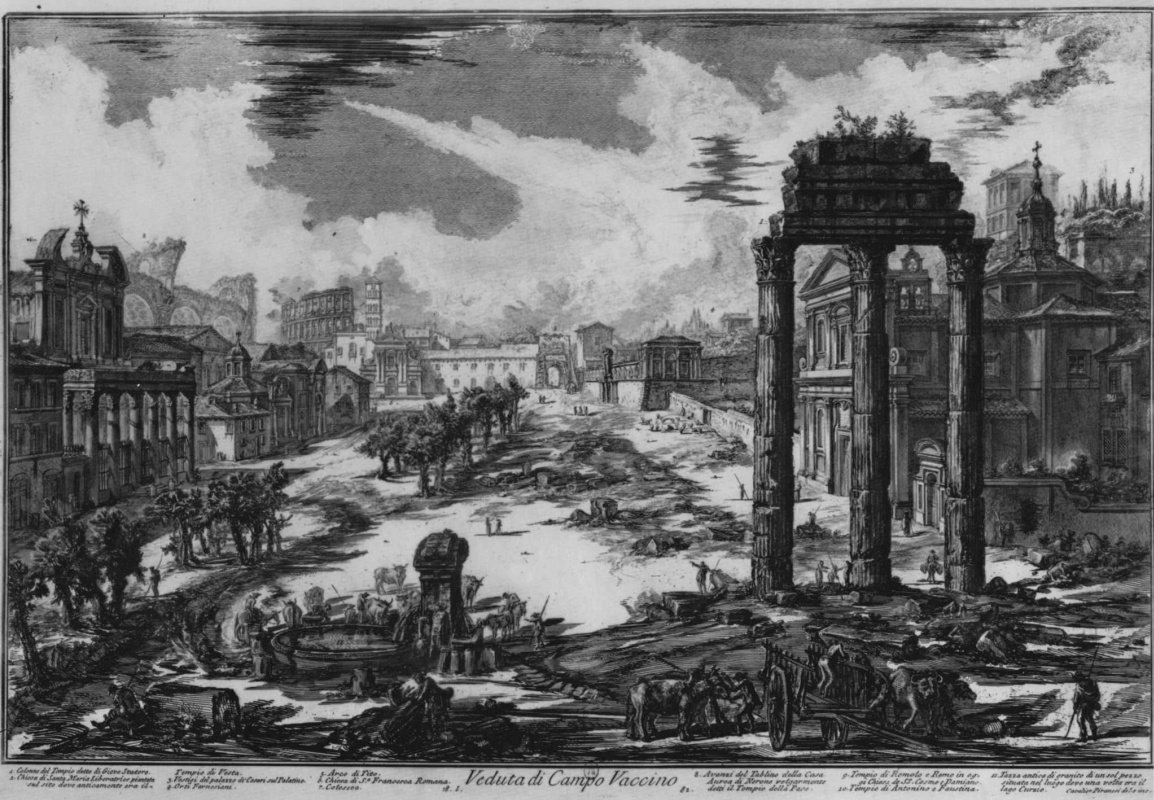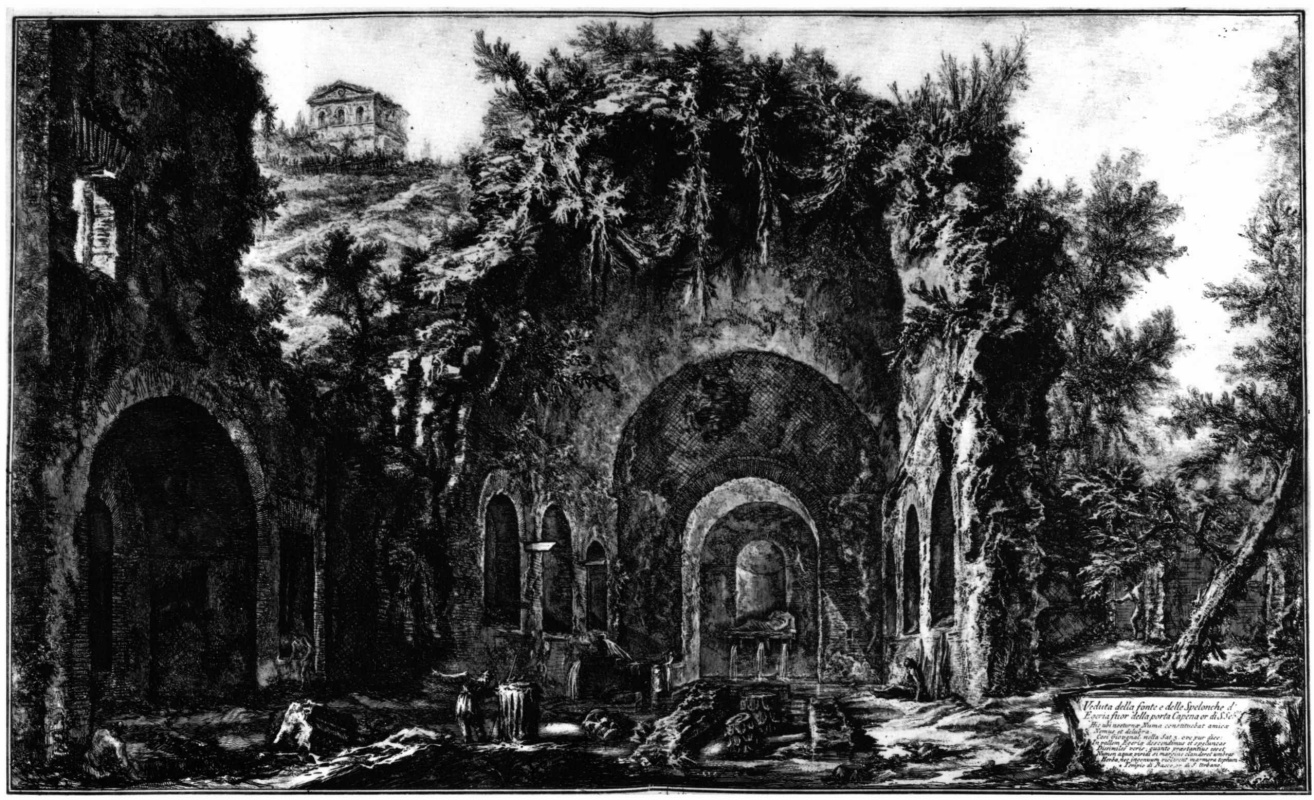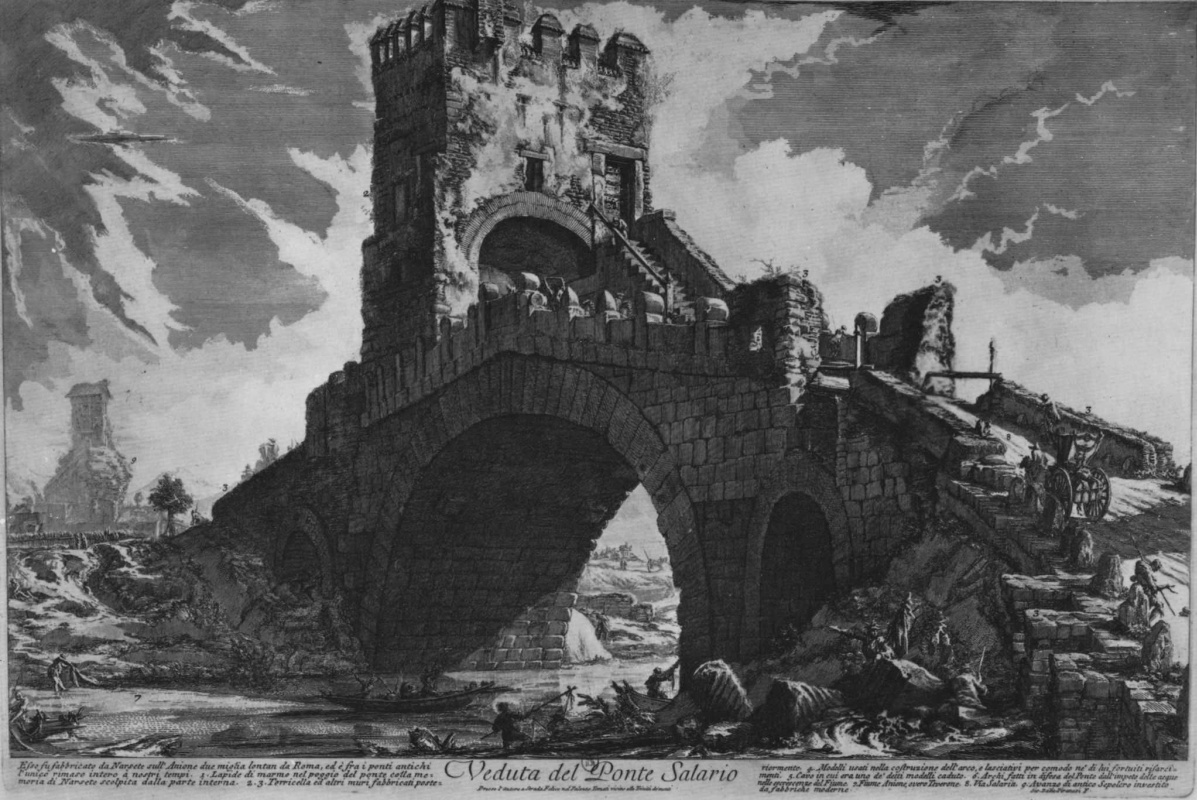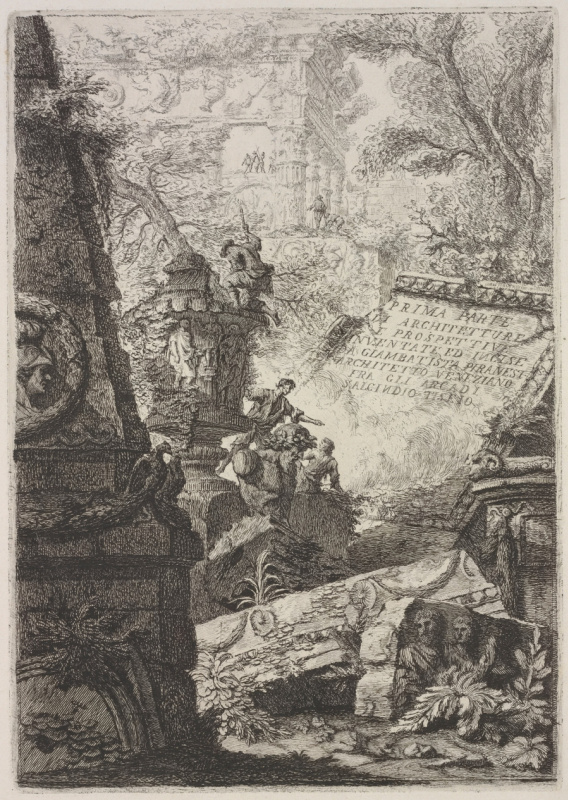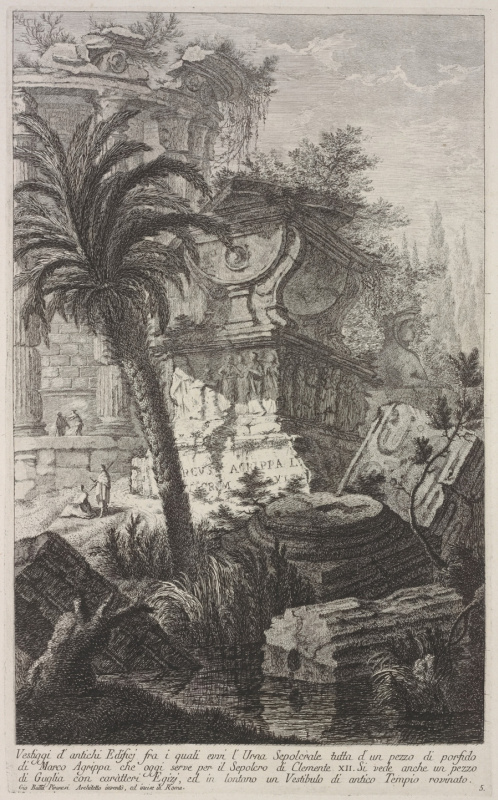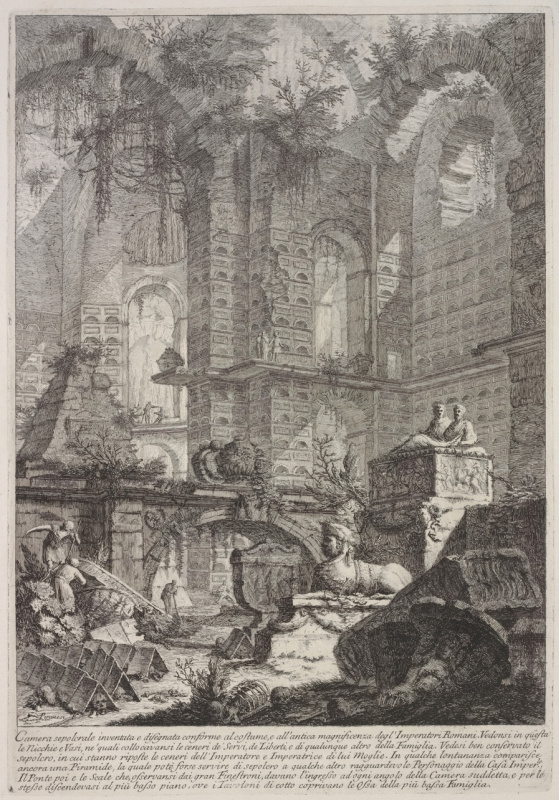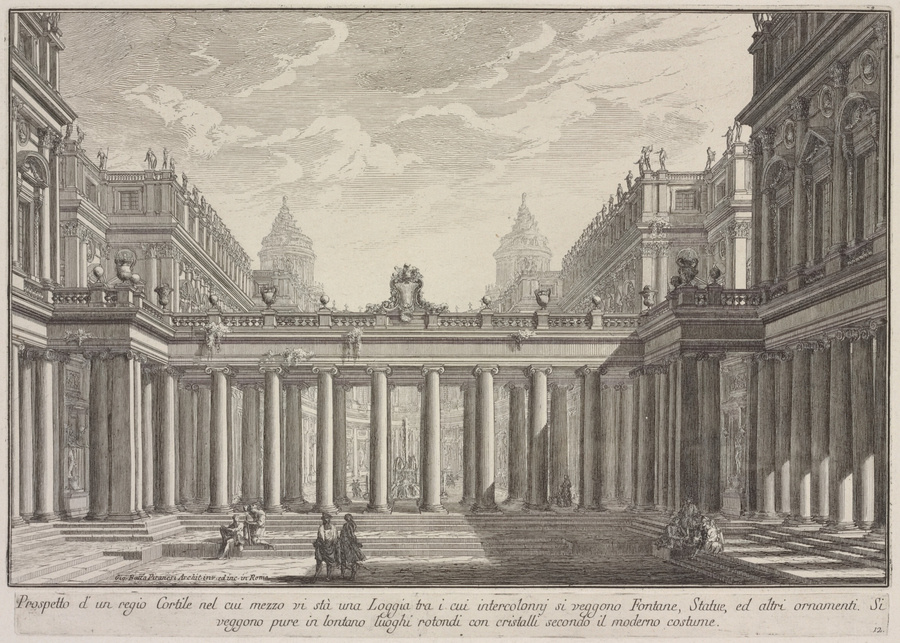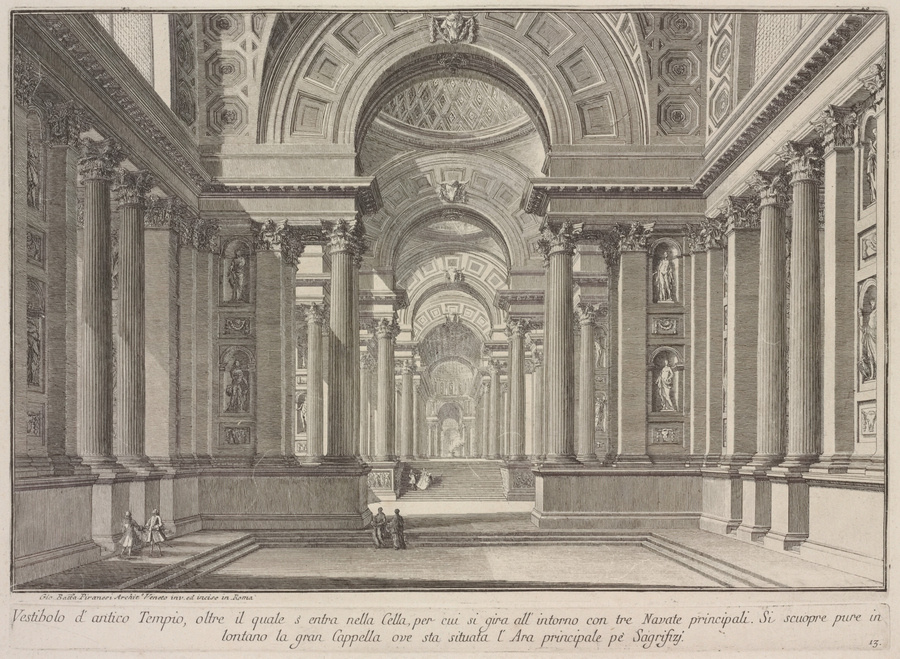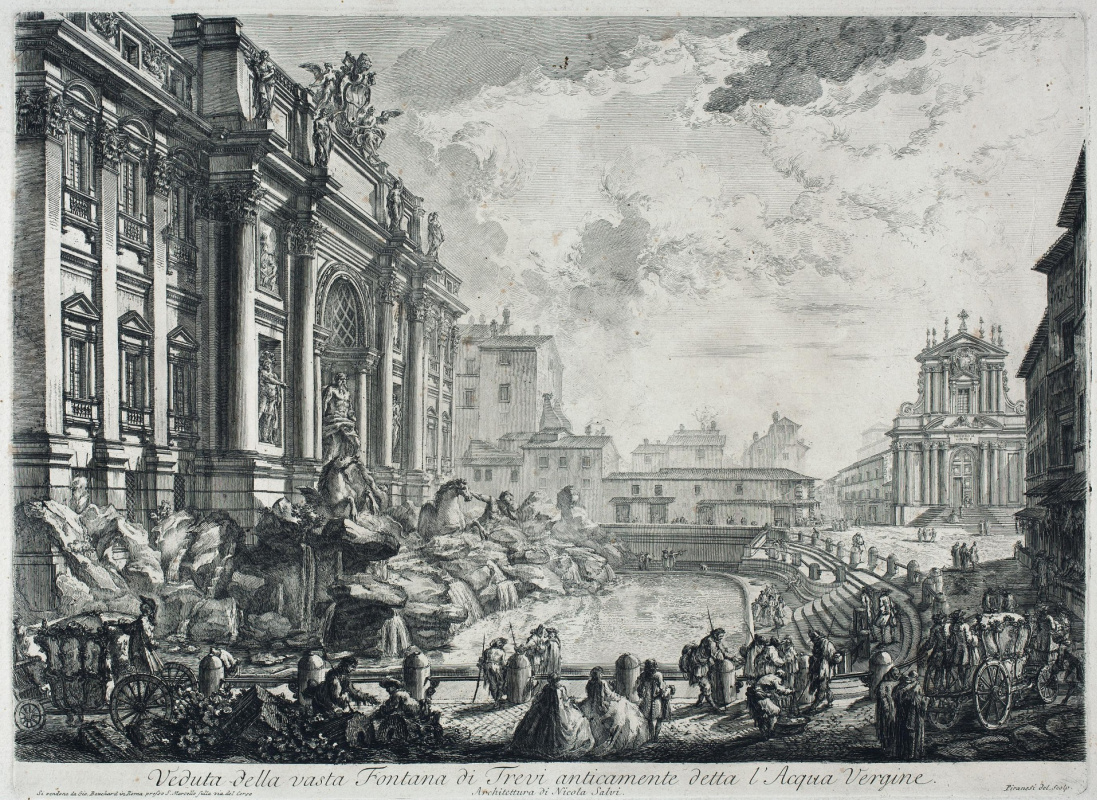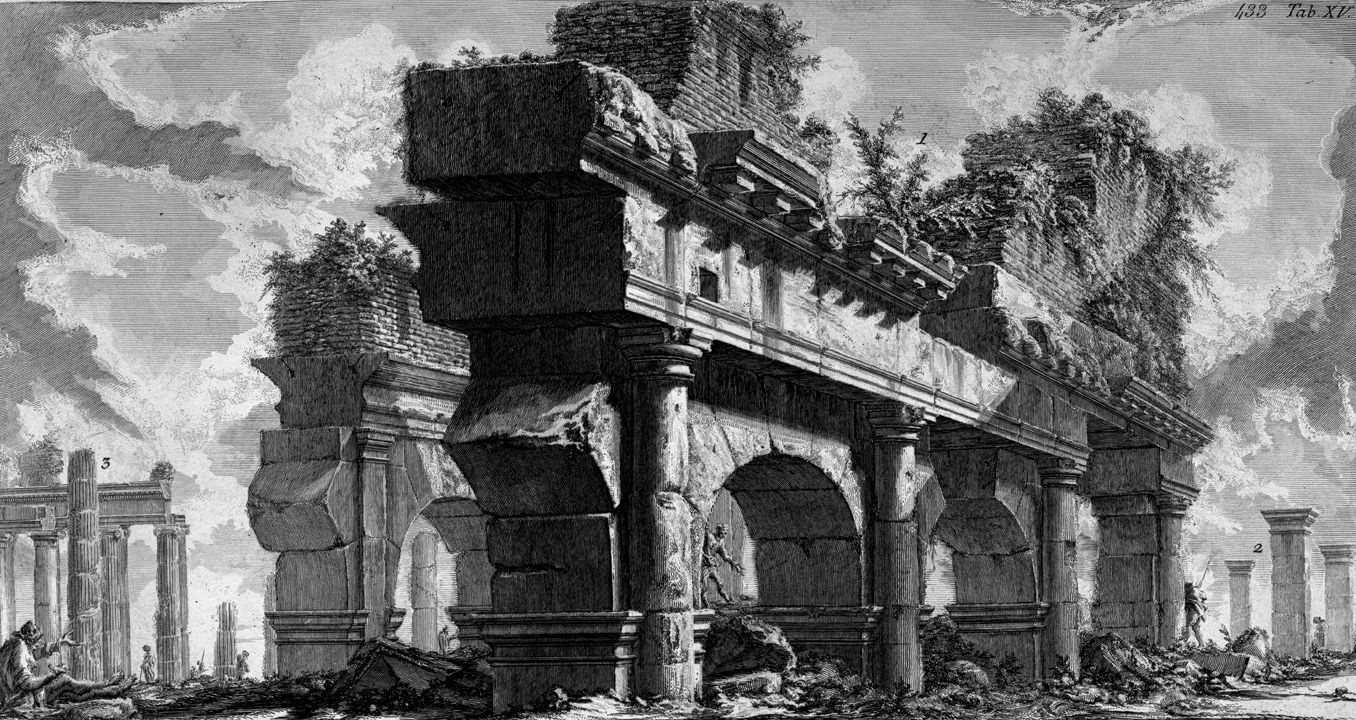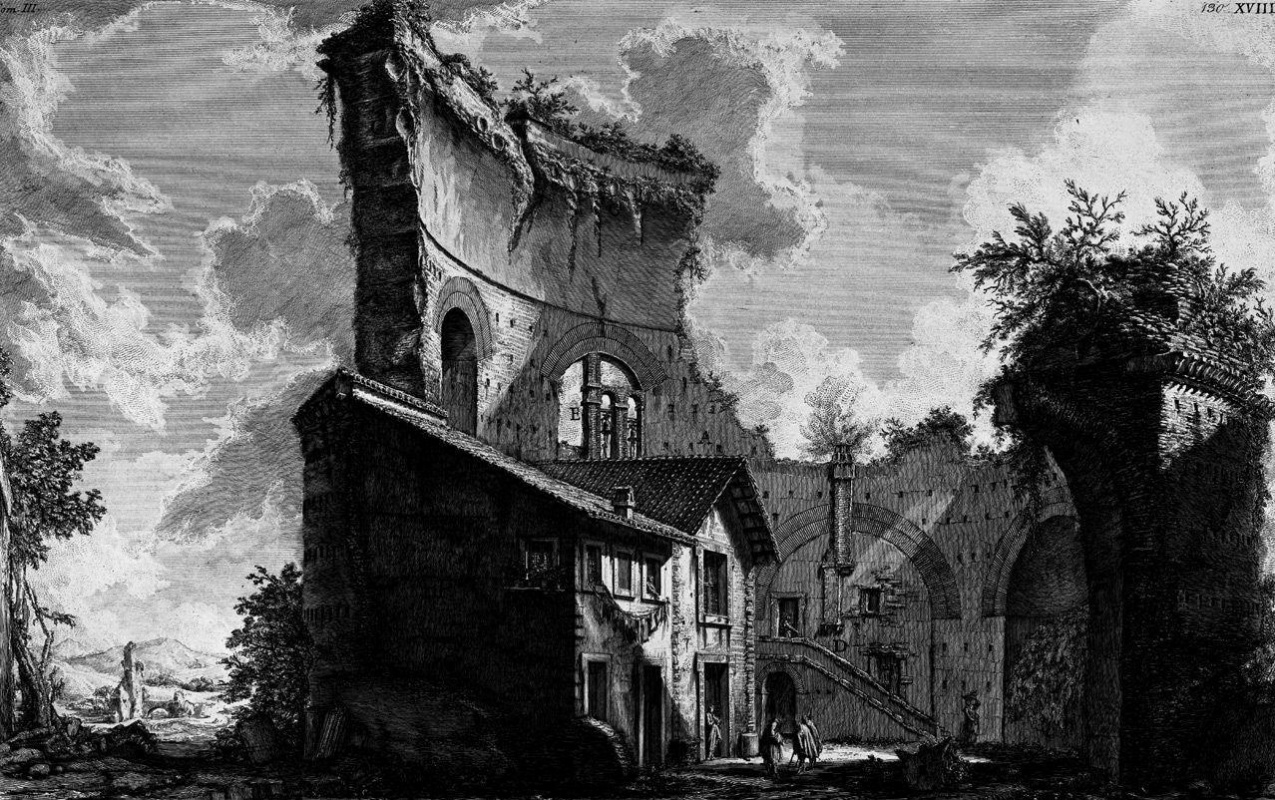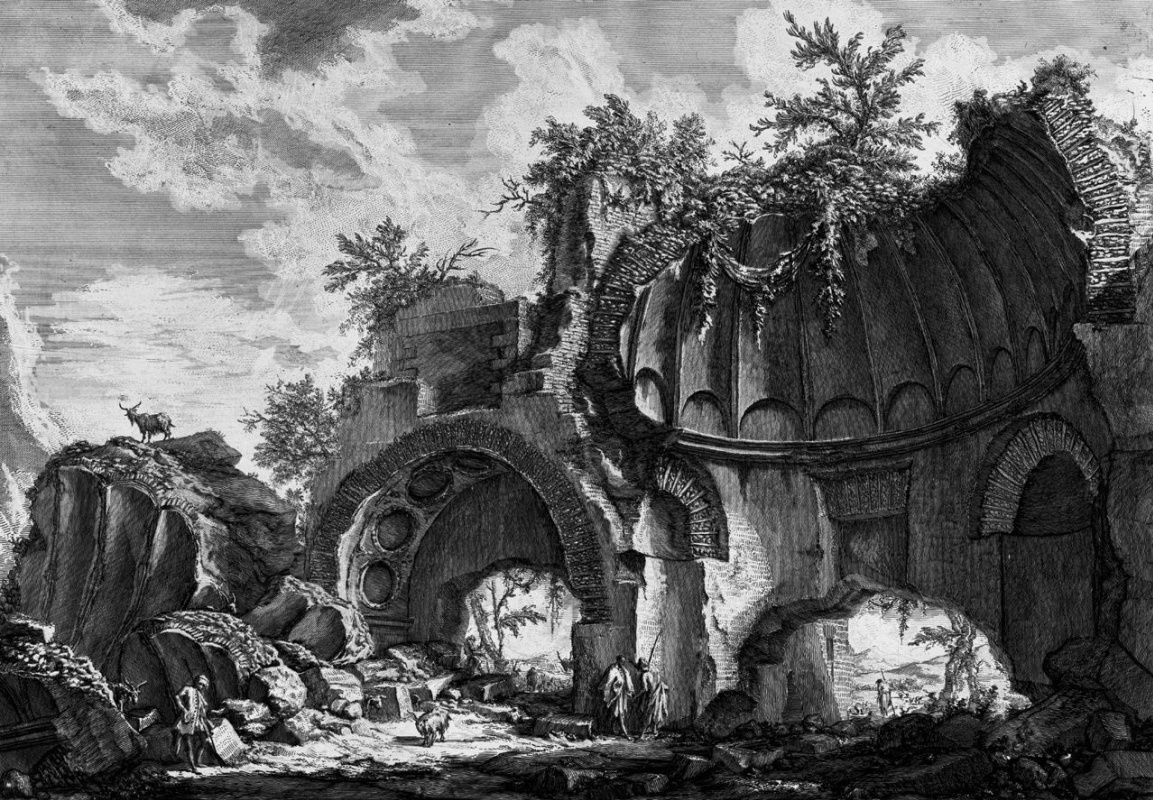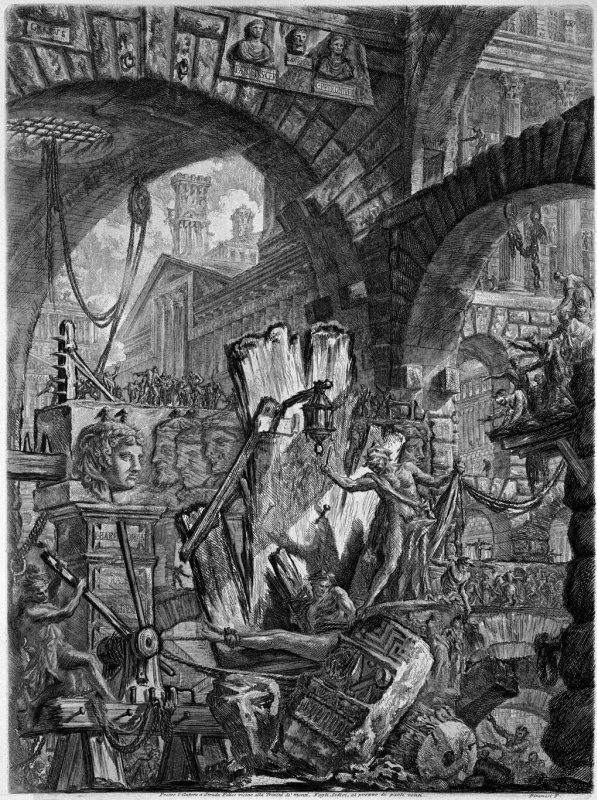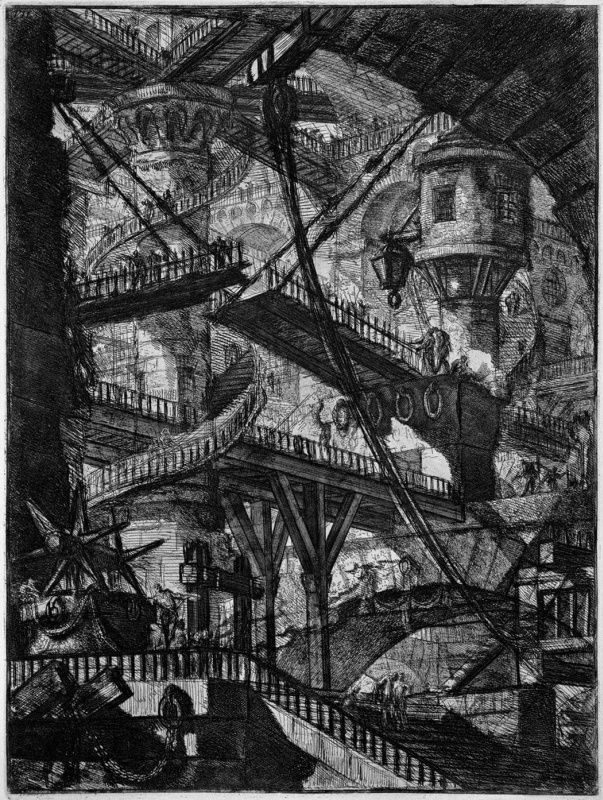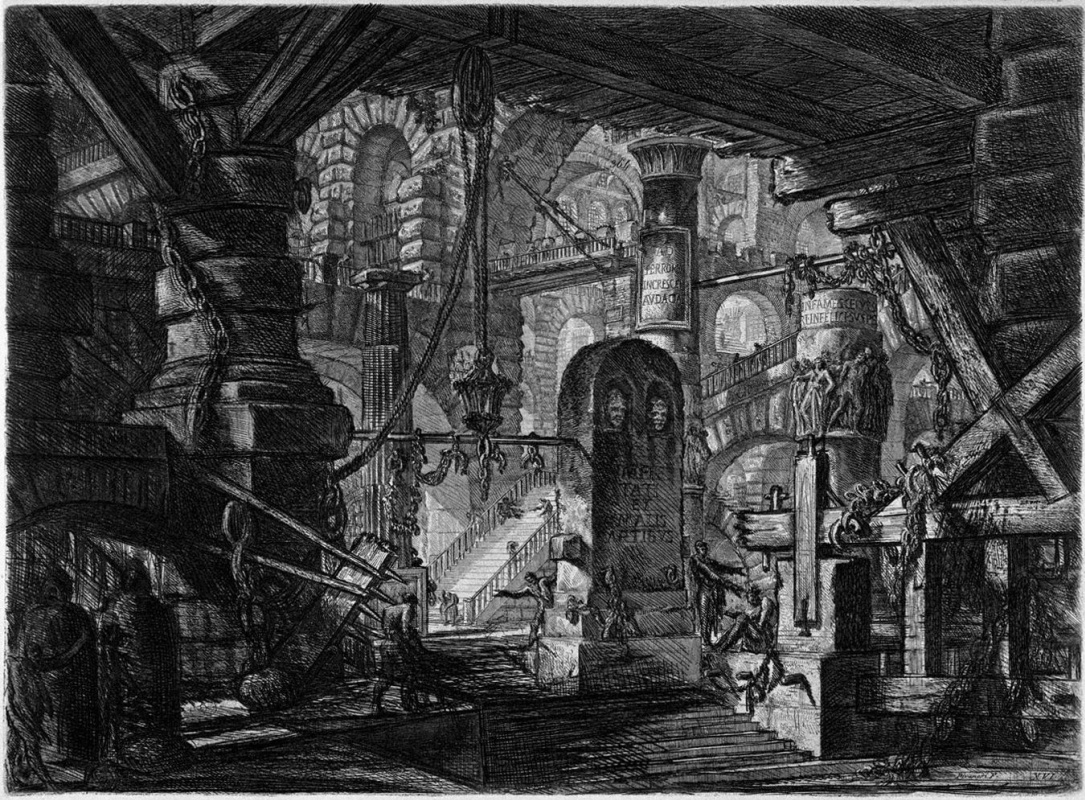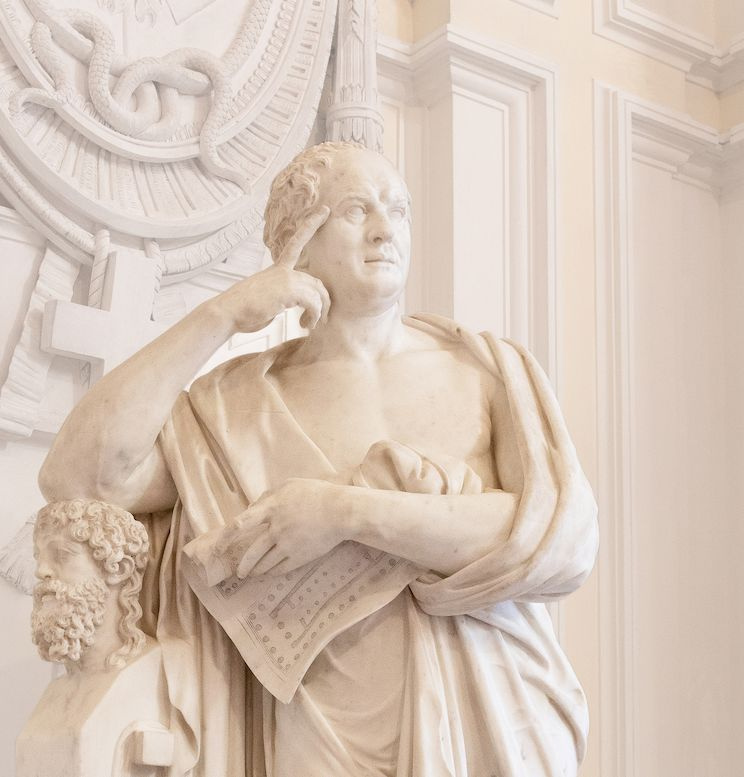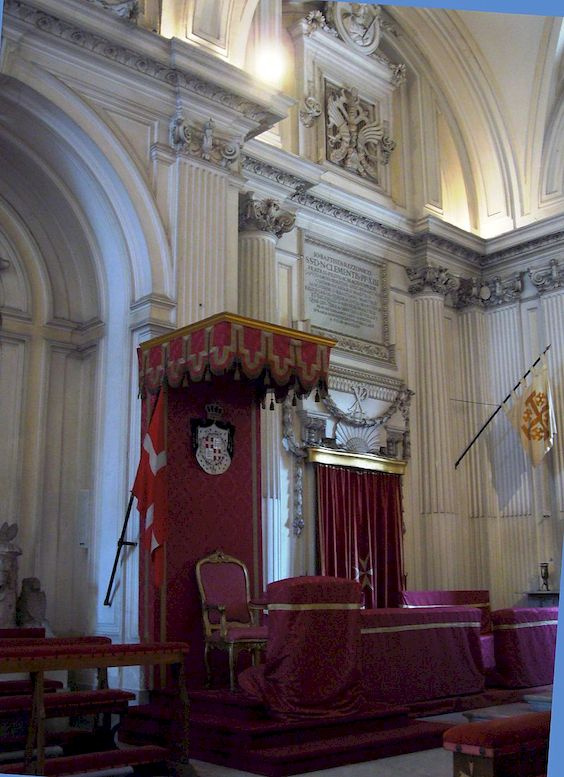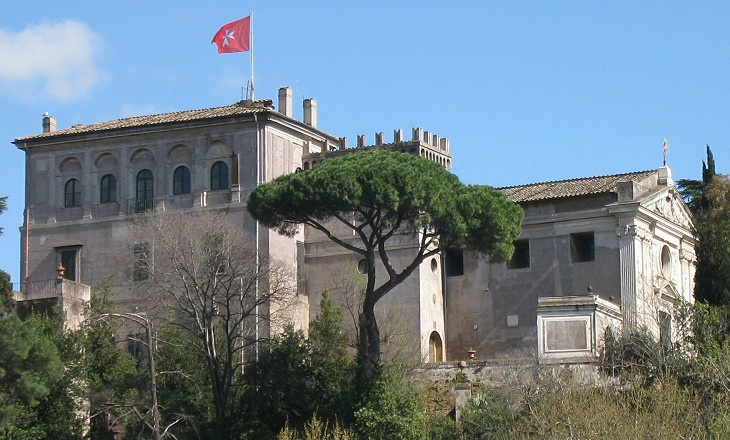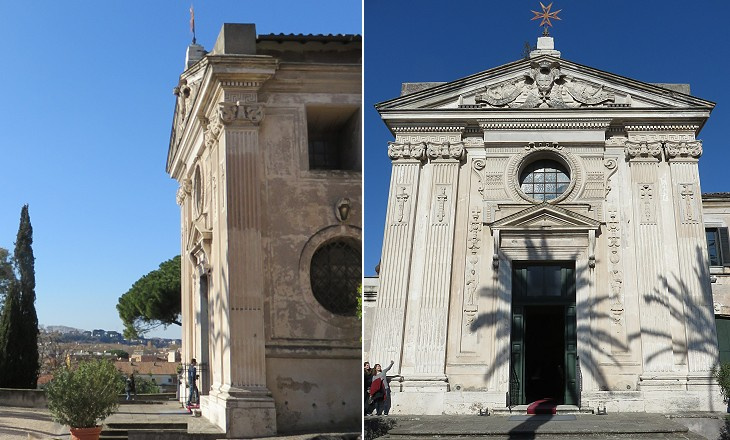
Piranesianism and Piranesimania

In 2020, almost the main literary sensation was the parable novel by the English writer Suzanne Clarke, Piranesi. The protagonist who explored the endless Halls decorated with Statues in anticipation of the Tides is named Piranesi, just like the Italian engraver of the 18th century. The novel is full of implicit, but clearly distinguishable references to his work.
Surely, Clarke is not the first to fall under the spell of the greatest "architectural science fiction writer" Giovanni Battista Piranesi (1720−1778). Both his work and his very personality have a powerful charisma that few can resist. Goethe was rather sceptical about Piranesi’s activity (we'll tell you why later). In general, the "paper architect" managed to catch the beginning of piranesimania during his lifetime — not so much imitation as passionate and delighted succession.
They created engravings and theatrical scenery à la Piranesi, built palaces and bridges, wrote essays and novels. Whole generations of architects grew up on Piranesi’s etchings albums, his works were enthusiastically collected and passed on by inheritance. Those who did not see Rome live successfully imagined it after Piranesi.
Russian tsarina Catherine II admitted that she was crazy about Piranesi’s "architectural treatises". The architects who worked at her court — Giacomo Quarenghi, Charles Cameron, Vasily Bazhenov — were either friends with Piranesi, or under his strong influence, and this affected the appearance of many buildings in St. Petersburg, Moscow, Tsarskoye Selo. Architects who worked in Russia later, from Auguste Montferrand in the 19th century to Boris Iofan in the 20th century, also could not escape the influence of Piranesi’s Views of Rome when they designed iconic buildings in Russian capitals, both St. Isaac’s Cathedral and Stalinist buildings. Yes, almost everything specifically imperial in Russian architecture grew out of the spiritualized and grandiose Rome, recreated in Piranesi’s engravings!

Piranesi became the hero of literary opuses long before Clarke’s novel.
In the 1840s, the romantic writer and amateur occultist Vladimir Odoevsky composed Opere del Cavaliere Giambattista Piranesi, a work in which the fiction architect Piranesi dreamt of connecting the volcanoes Etna and Vesuvius with a vault, and place a park of his designed castle behind these triumphal gates.
A little earlier, the British romantic Thomas de Quincey, in his sensational Confessions of an Englishman, an Opium Lover, the hero follows Piranesi in his opium vision, who was balancing over the abyss and climbing the endless stairs and sheer walls of grandiose imaginary prisons (this is the name the mysterious cycle of Piranesian engravings). De Quincey hints: the "paper architect" could have come up with the Prisons in an altered state of consciousness. This opens the way for future surrealists — they will interpret Piranesi as a subject of an eternal "trip", a journey into the dark and unknown depths of their own selves. Impossible Architecture by Maurits Cornelis Escher completes the line started in the Prisons by Piranesi.
Two original Piranesi prints from the Prisons suite adorned Sergei Eisenstein's study . "I am a longtime fan of the architectural frenzy of Piranesi’s Prisons," said the director who wrote the essay Piranesi or Fluidity of Form.
What do we know about Piranesi?

From the very childhood of Giovanni Battista, everything went to the fact that he would become an architect and nothing else. At the age of 7—8, his favourite pastime was measuring the width of the walls, the height of the cornices, the distance between the window and door openings. At the age of 10, Piranesi drew a project that seemed to have even been used in the construction of a real, non-toy building. His father was a renowned stonecutter, and his maternal uncle was an architect at the Venice water magistrate.
Piranesi read a lot in his youth. Under the influence of his elder relative Angelo, a Cartesian monk, he learned Latin and grew to like ancient authors. Among the artists he was most interested in the Vedutists, such as Visentini, Canaletto, Guardi, Luca Carlevaris; Venetian theatrical performances amazed his imagination with the scale of the scenery (their influence would later be found in Piranesian engravings). And then Piranesi fell in love for the first time. The girl who caused him a surge of feelings had just recently returned from Rome (Piranesi's old dream) and described where she had been and what she had seen in the Eternal City with delight.
So Piranesi, at the age of about 20 years, first came to Rome. A city to which he will vow to return to its former greatness. No more and no less.
Roman holiday
But at first, Rome disappointed Piranesi.Back in the 15th century, the humanist Giovanni-Francesco Poggio-Bracciolini lamented: "The forum, where the Roman people proclaimed their laws and appointed their rulers, is now occupied by vegetable gardens and meadows where buffaloes and pigs roam. How many public and private buildings, built so solidly that seemed to survive the centuries, now lie destroyed, plundered, crumbled in the dust, like parts of a mighty giant."
Rome did not have its best times then: the city was dilapidated and fell into decay. Piranesi found modern architecture uninteresting and sluggish. He complained in letters to friends about "the lack of patrons of this noble art, which is confirmed by the absence of buildings like the Forum of Nerva, the Colosseum or the palace of Nero". The absence of those who would like to invest in large-scale architectural projects put an end to the dreams of the novice architect.
A gifted architect who had neither funds nor reason to construct… If Piranesi were weaker in spirit, he would have fallen into despair and lost faith in his vocation. But he was a man of outstanding temperament and extraordinary enthusiasm. He began to create grandiose architecture not in real space, but on paper.
Rembrandt of ruins
Piranesi, naively dreaming of grandiose buildings that would be built in Rome after his drawings, had to return to Venice. There he still had time to learn from the famous Giovanni Battista Tiepolo, clearly realizing that Venice is still "not his" city. And in a few years he would still return to Rome, which he would never leave. He would rent a studio on Via del Corso and begin to produce small engravings with city views, which would very soon become very popular with the Romans, and even more with numerous tourists who flocked to the Eternal City and used them as guidebooks and commemorative postcards.Piranesi’s sociability and giftedness would very soon make him a name among the Roman aristocracy. He would be invited to decorate city carnivals — he had a field day there by creating temporary intricate wooden structures. He would also take part in the creation of a complete topographic map of Rome.
Both the Roman nobility and fellow artists agreed: he was a charismatic personality, but too strange. Hot-tempered, ardent, born adventurer. According to rumours, Piranesi almost killed his teacher, the engraver Giuseppe Vasi, when he decided that he was hiding professional secrets from him. "Talented man, but the uttermost madman," said the imposing Luigi Vanvitelli, the court architect of the Neapolitan Bourbons, about Piranesi.
Piranesi also developed this image because of his lifestyle. He spent most of his time not in his studio, but among the Roman ruins, which he loved fanatically. What ordinary Romans saw as only dilapidated ruins, Piranesi perceived as material evidence of the grandeur of Roman civilization; the idea of the greatness of Rome would become paramount for him. Contemporaries took away the remains of marble blocks for their economic needs — Piranesi, on the contrary, craved to preserve them, sketching what was left of the architecture of the Empire in detail and thoroughly.
Of course, many people thought he was obsessed. He spent days at the excavations. All the time he measured, sketched, wrote down something. He fed on empty rice all week, and if the night caught him at the time of an urgent matter, such as transferring a well-found angle to paper as soon as possible, he did not hesitate to sleep in an antique tomb.
Piranesi was seriously attached to the "paternal coffins", and he truly loved the strict logic of Roman architecture. He literally knew every stone in his favourite places. He was furious when someone moved these stones.
Having dreamed of becoming an architect since childhood, Piranesi willy-nilly turned into a serious archaeologist. Piranesi’s Vedute di Roma (Views of Rome) engravings made a kind of archaeological revolution: no one before him recorded Roman antiquities with such scrupulous meticulousness, with such anatomical detail. No one cared so much about them as Piranesi, who was convinced that Rome is the best city on earth!
Now he was called not only "the paper architect", but "The Rembrandt of ancient ruins".
Views of Rome
Piranesi worked on series of engravings with views of Rome, as well as images of antique art objects (vases, tripods, candelabra, obelisks, etc.) throughout his creative life. When he was about 25 years old, they brought him the first serious success with his contemporaries, and Piranesi died at 58, working on the image of Hadrian’s villa. Without exaggeration, he considered it his mission to preserve the endangered species of Rome for posterity.Actually, the name of the novice engraver was made by the series, which is briefly called Prima parte. The full title is "The first piece of architectural sketches and perspectives invented and engraved by Giovanni Battista Piranesi, a Venetian architect". These are the meticulously executed, spectacular prints that made Piranesi his first success.
Architectural views of Piranesi are often called powerful, grandiose, colossal. Piranesi was anatomically accurate in depicting the details of Roman architecture, and no one would call his images purely realistic. There is a paradox here: on the one hand, his buildings look like their real models (it was not for nothing that Piranesi learned spatial measurement from childhood and had an extraordinary eye), and on the other hand, they are much more spectacular, higher, more perfect. "Neither the Roman emperors, nor the Egyptian pharaohs would have enough power to build these buildings," Pavel Muratov noted in Images of Italy. "He understood triumphal arches, temples and Roman bridges not as the creation of people, but as the deeds of heroes." Ill-wishers said: Piranesi suffers from gigantism.
Piranesi’s Roman engravings, which spread across Europe in thousands of prints, attracted a huge number of tourists to Rome. Piranesi, whose studio produced the etchings of Rome en masse, was the catalyst for a new wave of tourism boom.
Imaginary Prisons
At the age of 25, Piranesi released a strange cycle of 14 engravings, Fantastic Compositions of Prisons. Audience didn’t appreciate it, as it was better to hang a Roman view on the wall than some incomprehensible prisons. Fifteen years later, Piranesi would republish this cycle; he added two more engravings and titled them "Prisons Composed by Cavallero G.-Batt. Piranesi, Venetian Architect". Contemporaries did not understand Piranesi again, the prints sold out poorly. But for the descendants, the "Prisons", gloomy, nervous, provocative ones, became a sensation and an inexhaustible source of inspiration.…Under the powerful overhanging vaults there are strange labyrinthine spaces. Their purpose is not so easy to understand: either fragments of Cyclopean palaces, or exotic torture rooms from the most unpleasant dreams. Bridges break in the middle or lead into darkness, stairs lead nowhere. Heavy blocks and logs, chains and ropes enhance the feeling of the enormity of the space. Someone is tortured on a rack, somewhere lions come to life and descend from the bas-reliefs, but the space, completely devoid of figures, turns out to be almost more terrible. As if something weary and mysterious hangs invisibly under these gigantic arches.
Studio, personal life and death of Piranesi
When Piranesi’s income grew, the "paper architect" changed his address — he moved with his family from Via del Corso to Palazzo Tomati on Strada Felice. The "lucky" name of the street (now Via Sistina, 48) did not disappoint: in his new house, Piranesi arranged everything the way he always wanted. First of all, he designed his studio as Roman ruins.Piranesi covered the walls of his studio with paintings that created the illusion of picturesque ruins. The interior only consisted of fragments of antique altars and urns, which served as cupboards, chairs and curbstones for the artist. Antique candelabra served as lamps for the artist. The kennel for the watchdog of Piranesi was a fragment of a giant decorative marble vase.
Here you could ask the price of Piranesi’s works or discuss some extremely worried question with him — for example, where did the Roman civilization come from. Piranesi, according to biographers, could spend hours enthusiastically talking about the Egyptians or Etruscans, but he was rather cool about Greek antiquity.

In addition to engravings, Piranesi sold antiques in his studio. For example, this vase from the Hermitage, according to a legend, was found during the excavations of Hadrian’s villa. However, experts found that many of the fragments of the vase had been modified by Piranesi: "The bottom of the vase, the grapevine-shaped handles and the handle bases in the form of a protome of Silenus were skilfully selected by the master Piranesi, and did not belong to one monument, which is clearly seen from how the fragment with the protome of the Silena is cut into the bottom."
Piranesi’s sudden marriage to Angela Paschini, apparently, turned out to be successful. Two children were born in it, daughter Laura and son Francesco, who would also become a famous engraver — his works are in Russian collections as well.







